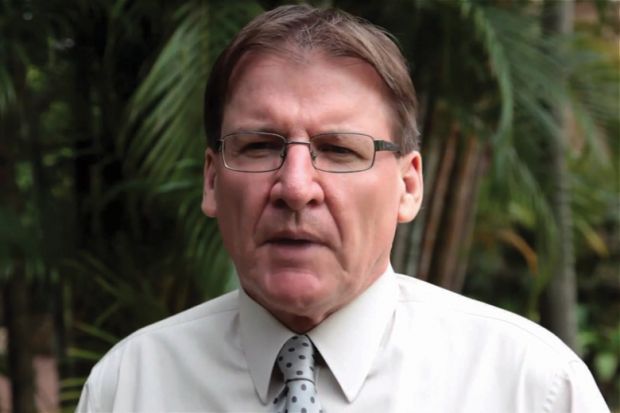It is known as the “Sunshine State”. And the outgoing chiefs of two of Queensland’s universities have extra reason to smile, after sharing pay rises of almost half a million Australian dollars.
Queensland University of Technology’s Peter Coaldrake leapfrogged the boss of the institution’s more fancied crosstown rival, the University of Queensland, to become the state’s highest paid vice-chancellor last year.
Professor Coaldrake earned about A$1.26 million (£686,000), after pocketing a pay rise of A$180,000. It was a golden swansong for the long-serving vice-chancellor, who retired in December after leading the institution for more than 17 years.
Professor Coaldrake’s remuneration in his last year of office eclipsed that of UQ’s Peter Høj, who took a A$3,000 pay cut to earn A$1.16 million. This came after Professor Høj, whose annual salary includes a A$200,000 performance bonus, claimed a A$62,000 pay rise in 2016.
Meanwhile, a A$285,000 raise for Scott Bowman, vice-chancellor of Central Queensland University, pushed up the Rockhampton-based administrator’s pay package by 53 per cent to about A$825,000.
CQU said that Professor Bowman had been awarded a A$180,000 bonus for meeting key performance indicators around growth and community engagement. The institution’s annual report, one of seven released by the Queensland parliament, says that its student population has grown by more than a third in recent years.
It says that CQU is also Australia’s “most inclusive university”, boasting the highest ratio of disadvantaged, mature, indigenous and first-in-family students. It also has easily the biggest footprint of any Australian university, with 24 campuses and study centres from Cairns in northern Queensland to the Western Australian hamlet of Busselton – a 2,200-mile flight away.
Professor Bowman said that he had been one of Australia’s lowest-paid vice-chancellors when his contract came up for renewal four years ago. He had rejected the university council’s offer of an annual A$60,000 pay rise, but the council had “insisted” that he accept the money as a one-off bonus at the end of his contract.
He said that he now regretted his stance, because it meant that he had received three years’ worth of bonuses in a single instalment. “I always knew that was going to look odd,” Professor Bowman said.
The vice-chancellors of three other Queensland public universities notched up relatively modest pay rises of between 0 per cent and 5 per cent, while a fourth – the University of Southern Queensland, where interim vice-chancellor Janet Verbyla did not see out the full year – paid 10 per cent less to the university’s chief executive than it had in 2016.
Nevertheless, the average vice-chancellor salary package across the seven universities was A$940,000 (£513,000) – a far cry from the £268,000 claimed by the average British vice-chancellor and more than the £471,000 enjoyed by the University of Bath’s Glynis Breakwell, the country’s top earner.
Professor Bowman, who recently announced his decision to retire, said that people in Australia as well as his native England would struggle to understand the sums paid to university chiefs.
“The salaries are very high, there’s no two ways about it,” he said. “Vice-chancellors work very hard for them, but lots of people work very hard. My old man worked really hard in an aluminium foundry.”
Register to continue
Why register?
- Registration is free and only takes a moment
- Once registered, you can read 3 articles a month
- Sign up for our newsletter
Subscribe
Or subscribe for unlimited access to:
- Unlimited access to news, views, insights & reviews
- Digital editions
- Digital access to THE’s university and college rankings analysis
Already registered or a current subscriber? Login












